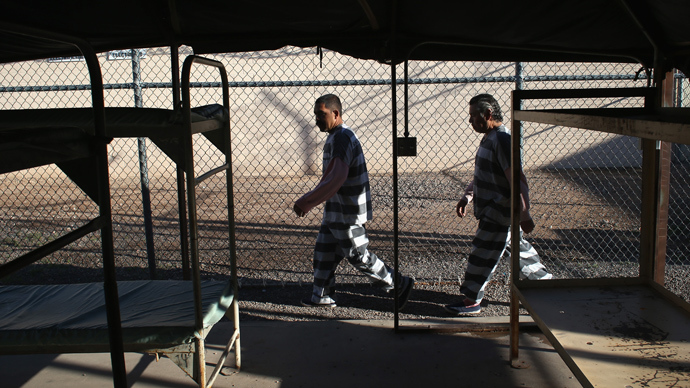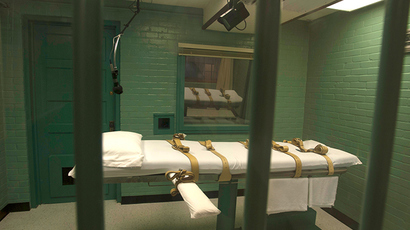1 in 25 death row inmates is likely innocent - study

A new study estimated that no less than four percent of the approximately 3,000 US prisoners waiting to be put to death are in fact innocent of the crimes they committed, a shocking number that is far less than the inmates who are freed before execution.
Researchers and legal experts from Pennsylvania, Michigan, and elsewhere around the country came together to examine the so-called “dark figure” that underscores the death penalty debate: how many of the people sentenced to die for their crime are actually innocent?
The result, a peer-reviewed analysis published by the Proceedings of the National Academy of Sciences of the United States, is described as a “deliberately conservative” number which makes clear that wrongful convictions are not as uncommon as many would like to believe.
Legal teams determined that if all of those wrongfully convicted had their sentences cleared, the exoneration rate would jump from its current 1.6 percent to no less than 4.1 percent. By that logic, around 340 prisoners should have been released over the 30 years analyzed in the study, whereas only 138 were exonerated in that time.
“This is a disturbing finding,” Samuel Gross, a law professor at the University of Michigan law school and the lead author of this study, told the Guardian. “There are a large number of people who are sentenced to death, and despite our best efforts some of them have undoubtedly been executed.”
The 4.1 percent is higher than previous estimates, although the researchers are confident that their method of “survival analysis” research was effective. The technique employs a variety of statistical devices to calculate the proportion of cases of so-called hidden innocence. To remain unbiased, they also used “sensitivity analysis” to determine how many exonerated convicts were in fact guilty.
“If you look at the numbers in our study, at how many errors are made, then you cannot believe that we haven’t executed any innocent person – that would be wishful thinking,” Smith said.
Statisticians investigating the matter were unable to accurately determine how many innocent men and women were executed, yet they took exception with a claim from US Supreme Cout Justice Antonin Scalia, who previously suggested that criminal convictions have an “error rate of 0.27% - or, to put it another way, a success rate of 99.973%.”
“That would be comforting, if true,” the study authors wrote. “In fact, the claim is silly.”
Richard Dieter, executive director of the Death Penalty Information Center, told journalist Ed Pilkington that “every time we have an execution, there is a risk of executing an innocent person. The risk may be small, but it’s unacceptable.”
Gross and his fellow academics said more prisoners than the number who were executed seem to have fallen between the cracks. In the years from 1993 to 2004 about 2,675 people were taken off death row when questions about their conviction were raised. That total represents more than one-third (36 percent) of all people sentenced to death over those three decades.
Instead of being exonerated, though, many of those thousands of people were given new sentences (more often than not life without parole) that will ensure their death behind bars anyway. Their situation is in some ways even more precarious because no longer being under threat of execution means they are no longer seen as a priority in the system, either by judges, prisoner advocate groups, or the department of corrections itself.
“The best efforts of the judicial system are only devoted to prisoners when they faced execution,” Gross explained. “In many cases when people are released from death row, little or nothing is done to deal with the equally bad injustice they now faced – that they will spend the rest of their lives in prison for a crime they didn’t commit.”
















